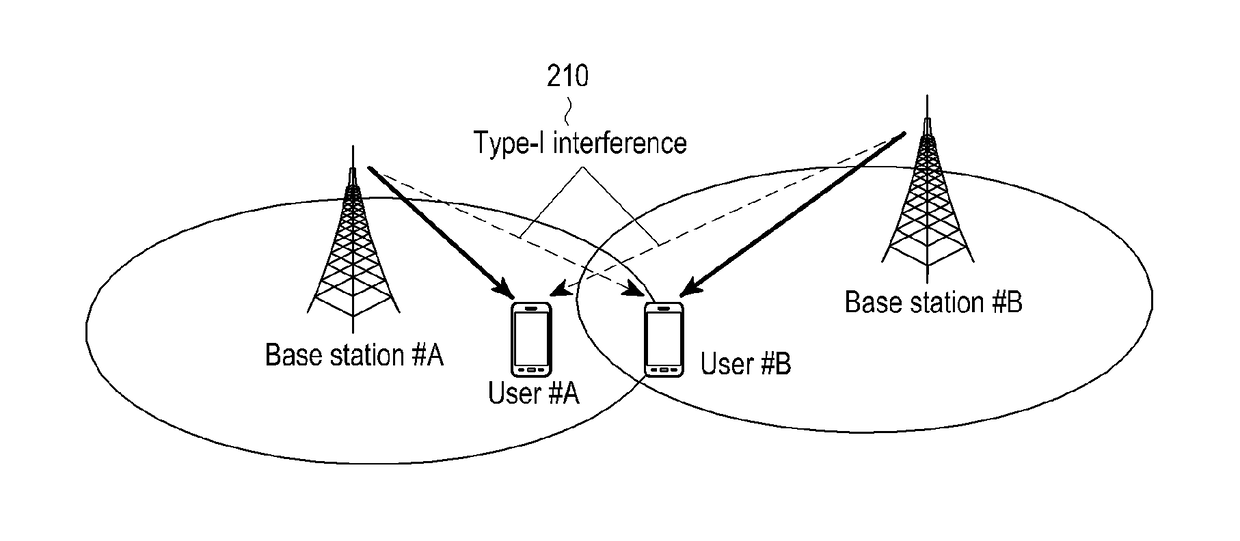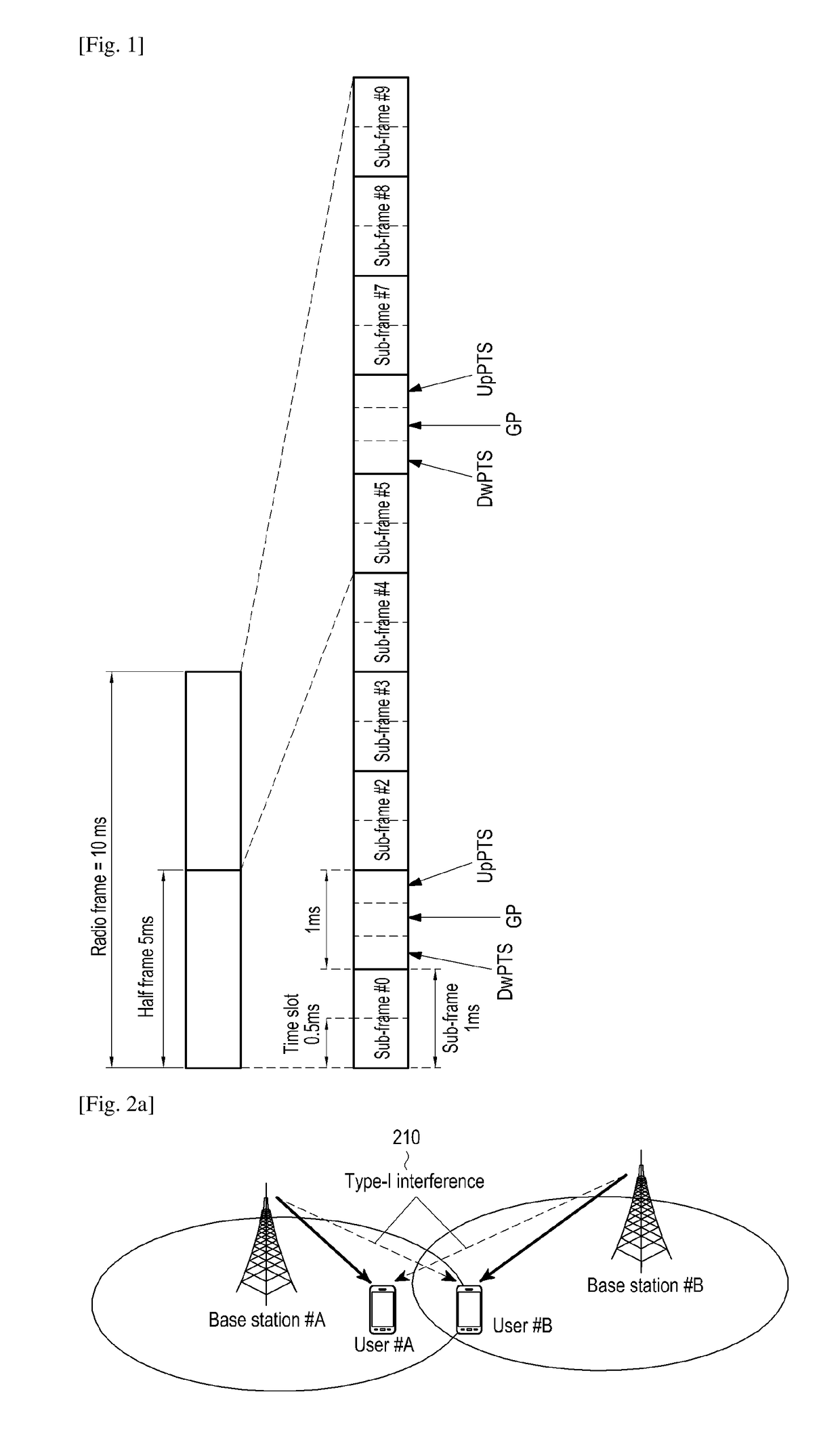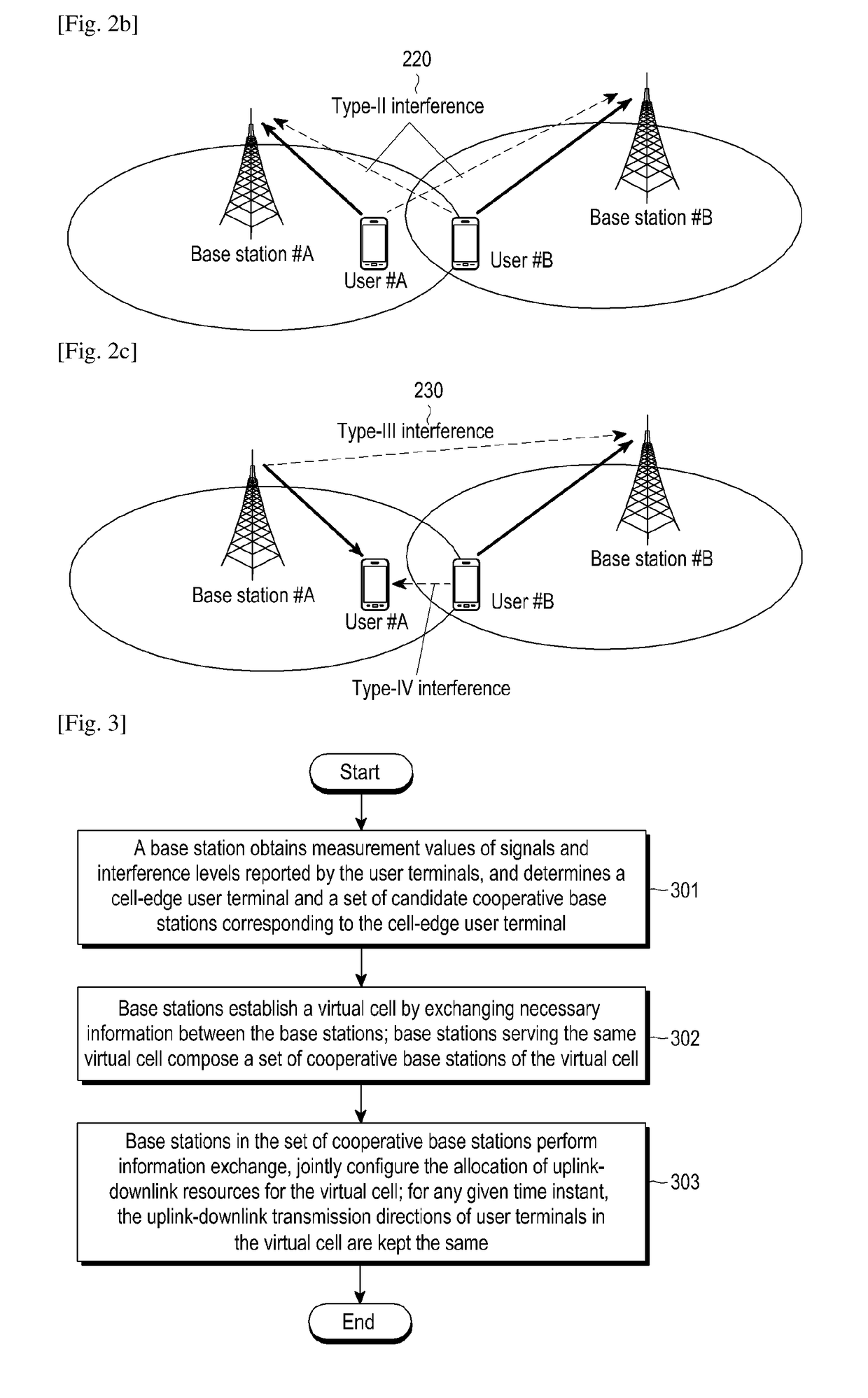Resource management method and apparatus
- Summary
- Abstract
- Description
- Claims
- Application Information
AI Technical Summary
Benefits of technology
Problems solved by technology
Method used
Image
Examples
first example
A First Example
[0141]FIG. 8a is a schematic diagram illustrating a transmission method of a virtual cell according to a first example of the present disclosure for a given homogeneous sub-frame pattern.
[0142]As shown in FIG. 8a, user #A and user #B compose a virtual cell 810, and both cell #0 and cell #1 are cooperative cells of the virtual cell 810. Cell #0 and cell #1 respectively employ uplink-downlink configuration 5 and uplink-downlink configuration 3 to perform uplink-downlink transmission, therefore the uplink-downlink configuration pattern of the virtual cell 810 is a combination of uplink-downlink configuration 5 and uplink-downlink configuration 3. The allocation of uplink-downlink resources of the virtual cell 810 are jointly configured by the cooperative base station #0 and the cooperative base station #1 of the virtual cell 810. That is to say, the users in the virtual cell 810 may flexibly utilize the uplink-downlink resources of the cooperative cells of the virtual ce...
second example
A Second Example
[0153]FIG. 9 is a schematic diagram illustrating a method of configuring uplink-downlink resource allocation of the virtual cell according to the traffic requirement of the virtual cell in a second example of the present disclosure.
[0154]As shown in FIG. 9, user #A and user #B compose a virtual cell 910, and both cell #0 and cell #1 are cooperative cells of the virtual cell 910. Cell #0 and cell #1 respectively adopt uplink-downlink configuration 5 and uplink-downlink configuration 3 to perform uplink-downlink transmission, therefore the uplink-downlink configuration pattern of the virtual cell 910 is a combination of uplink-downlink configuration 5 and uplink-downlink configuration 3. The allocation of uplink-downlink resources of the virtual cell 910 are jointly configured by the cooperative base station #0 and the cooperative base station #1 of the virtual cell 910. That is to say, the users in the virtual cell 910 may flexibly utilize the uplink-downlink resource...
third example
A Third Example
[0160]FIG. 10 is a schematic diagram illustrating a method of configuring uplink-downlink resource allocation of the virtual cell according to the resource utilization rate of each cooperation cell of the virtual cell in a third example of the present disclosure.
[0161]As shown in FIG. 10, user #A and user #B compose a virtual cell 1010, and both cell #0 and cell #1 are cooperative cells of the virtual cell 1010. Cell #0 and cell #1 respectively adopt uplink-downlink configuration 5 and uplink-downlink configuration 3 to perform uplink-downlink transmission, therefore the uplink-downlink configuration pattern of the virtual cell 1010 is a combination of uplink-downlink configuration 5 and uplink-downlink configuration 3. The allocation of uplink-downlink resources of the virtual cell 1010 are jointly configured by the cooperative base station #0 and the cooperative base station #1 of the virtual cell 1010. That is to say, the users in the virtual cell 1010 may flexibly...
PUM
 Login to View More
Login to View More Abstract
Description
Claims
Application Information
 Login to View More
Login to View More - R&D
- Intellectual Property
- Life Sciences
- Materials
- Tech Scout
- Unparalleled Data Quality
- Higher Quality Content
- 60% Fewer Hallucinations
Browse by: Latest US Patents, China's latest patents, Technical Efficacy Thesaurus, Application Domain, Technology Topic, Popular Technical Reports.
© 2025 PatSnap. All rights reserved.Legal|Privacy policy|Modern Slavery Act Transparency Statement|Sitemap|About US| Contact US: help@patsnap.com



